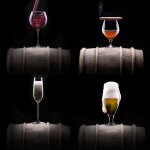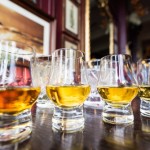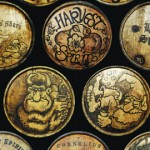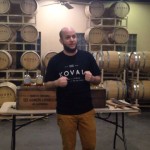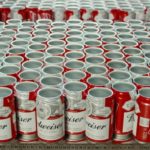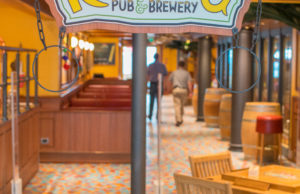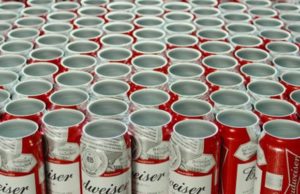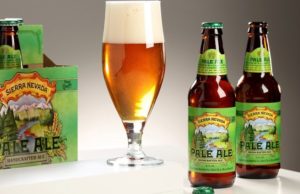Bainbridge Organic Distillers: Why Organic Spirits Rule
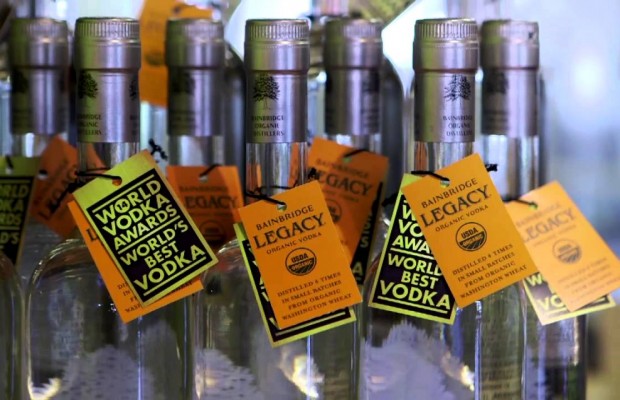
Bainbridge Organic Distillers is one of the few all-organic distilleries in the United States. Producers of the “best vodka in the world” according to the recent World Drinks Award (London) and lovers of traditional production techniques, Bainbridge is changing the way we think of craft drinks.
We talked to Keith Barnes, proprietor and distiller at Bainbridge to learn more about their techniques and why keeping things green can make a world of difference.
QUESTION: Can you give us a closer look into what being an organic distiller is all about?
KEITH BARNES: At the outset I think that a distiller has to have a high level of dedication to the idea of producing USDA Certified spirits and be willing to undertake the many specific challenges that organic producers face. In many cases, distillers have to search out organic grain growers, and they have to investigate what processing aids, minerals and yeasts are compatible with their organic grain and compliant with the NOP regulations. Distillers have to be dedicated to transparency because more and more consumers want to know every detail that went into the production of the spirits.
Distillers need to be financially capable of supporting a USDA Certified Organic operation as well. Organic raw materials can cost more than 2X their conventional counterparts. Yeasts can cost 3X. NOP compliant processing aids are less efficient than their GMO counterparts, so yields are lower.
We have seen several distilleries begin operation waving the organic banner, only to quickly take down that flag and switch to conventional production once the complete ramifications of organic production become assessed. You have to WANT TO do this to make it happen.
QUESTION: Why did you decide to go organic and what steps have you taken to make your facility completely organic?
KB: We started this distillery knowing we would be making USDA Certified organic spirits or none at all. My belief was that there are hundreds of truly exceptional conventionally produced spirits available to consumers today, but there were very few USDA Certified Organic options. We wanted to prove to the industry that there needed to be a place for organic spirits and that organic spirits, as a category, could be successful.
We also decided prior to opening the distillery that we would not be making a conventional version of our distilled spirits to avoid having to house conventional grain in our facility.
QUESTION: You’ve made an effort to combine the best of modern techniques and old-age craft to produce your spirits. Can you give us an idea of how you manage to marry those two things and what are you using (and why) from each era?
KB: In many cases form follows function. The grains used in organic agriculture in many cases are older varieties that were developed to grow successfully without the need for dramatic chemical intervention. Some of the enzymes used in the production of organic spirits were originally developed in 1917. Still, technology has advanced in the past 50 years but most small-batch distillers use equipment that is virtually identical to what distillers might have used 50 or 100 years ago.
From an analytical standpoint, we send grains to the lab for a full analysis of starches, proteins, sugars, trace minerals, various molds and mycotoxins in an effort to determine what our optimal yields from any one batch of grain might be.
We also utilize the most modern technologies such as high-speed gas chromatography available to examine the distilled components of our spirits. Two sets of spirit samples are drawn, and regular intervals throughout the various still run. One set of samples is analyzed using HSGC and the other remains at the distillery as a control sample. Results of the analysis are compared and reviewed against the organoleptic markers in the control samples. By comparing our sensory interpretation of the spirit cuts against the hard HSGC data we gain insight that allows us to make cuts having a fuller understanding of exactly what we are feeling, smelling or tasting might manifest itself in the finished spirit.
QUESTION: You were voted the “world’s best vodka” at the World Drinks Awards in London. What makes your vodka so special?
KB: Other than it’s made with LOVE and the best soft white wheat in the world? Our vodka is made with 100% soft white wheat grown in the Walla Walla Valley, and this area is world renowned for producing some of the world’s best wheat – and the quality of the organic grain is even higher than that of the conventional production.
The vodka is slowly distilled four times using a batch still and reflux column employing a stainless steel Sulzer Melapak topped by a 31-tube dephlegmator. Slow and careful distillation allows for minute amounts of flavor components made during fermentation to void the still with the ethanol that accounts for the viscous mouth feel, vanilla aromatics and citrus notes evident ion the flavor.
QUESTION: Can you tell us a bit about the production process for your organic wheat whiskey?
KB: From the onset, this whiskey was intended to be a hybrid on techniques and raw materials utilized in America and flavors more closely aligned with whiskeys made in the UK.
Our Battle Point Organic Wheat Whiskey is mashed using a grain bill of 100% organic soft white wheat. We utilize two unique yeasts fermented in alternating batches – the first yeast is used in the production of Scotch whiskey and the second is used in the production of Irish whiskey. As these yeasts have different temperaments the mashing regime for each is unique.
Once fermentation has ceased the mashes are distilled in our Vendome batch still and collected in a stainless steel holding tank – the new make from both yeast strains are co-mingled at this point. Once the first cut from 8-10 batches has been collected it is distilled at a relatively high proof a second time, with careful cuts made throughout the run.
Battle Point Organic Wheat Whiskey is aged in 10 and 15-gallon new American oak casks, under a heavy char. We also have begun to mature this whiskey in 59-gallon barrels, also new and under heavy char. Current aging plan requires that the 10-15 gallon whiskeys reach 30 months or age before their first consideration for bottling, while some barrels will mature for a full three years before being emptied and taken slowly down to bottling proof and packaged.

